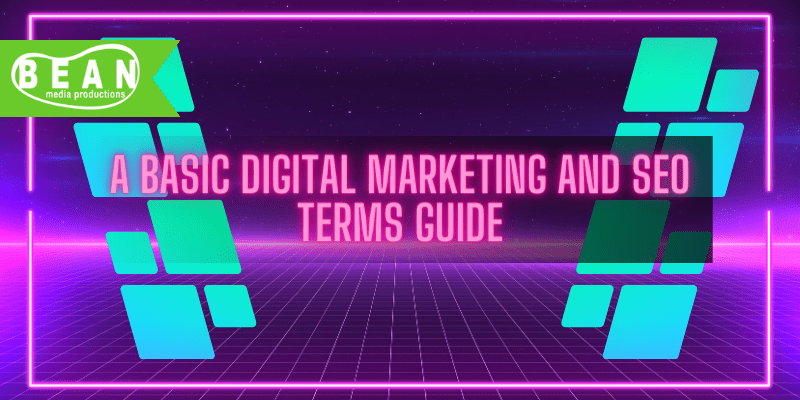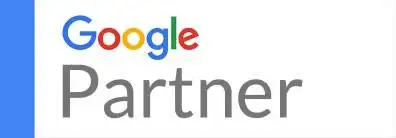75+ Digital Marketing and SEO Terms You Need to Know

Digital Marketing and SEO Terms
Digital Marketing and SEO can be dangerous to your rankings and reach to undertake alone. Take this!
- 301 Redirect: A permanent redirect from one webpage to another, the “301” refers to the HHTP status code
- 302 Redirect: A temporary redirect from one webpage to another
- 404 Error: HTTP status error that means the searched page is not found on the server, even though the browser established a connection to the server. If a page is supposed to be there and returns a 404 error, there is likely a technical error at play.
- A/B Testing: A method in marketing research where you compare two versions of a single variable to see which performs better.
- Above the Fold: The part of a web page that is visible without scrolling.
- Ad Impressions: The number of times an ad is displayed.
- Affiliate Marketing: An advertising model in which a company pays third-party publishers to generate traffic or leads to the company’s products and services.
- Algorithm: A set of rules that search engines use to rank listings in response to a query.
- Analytics: The measurement, collection, analysis, and reporting of web data for purposes of understanding and optimizing web usage.
- API (Application Programming Interface): A set of routines, protocols, and tools for building software and applications.
- B2B (Business-to-Business): A type of business model where one business sells products or services to another business.
- B2C (Business-to-Consumer): A type of business model where a business sells products or services to individual consumers.
- Banner Ad: A form of advertising on the web that entails embedding an advertisement into a web page.
- Behavioral Targeting: A technique used by advertisers and publishers to utilize a web user’s previous web browsing behavior to customize the types of ads they receive.
- Blogs: A regularly updated website or web page, typically run by an individual or small group, that is written in an informal or conversational style.
- Bounce Rate: The percentage of visitors who navigate away from the site after viewing only one page.
- Brand Awareness: The extent to which consumers are familiar with the distinctive qualities or image of a particular brand of goods or services.
- Call to Action (CTA): A marketing term used for the action you want the website user to take.
- Click-through Rate (CTR): The ratio of users who click on a specific link to the number of total users who view a page, email, or advertisement.
- Content Management System (CMS): A software that enables users to create, edit, organize, and publish content on the web.
- Conversion Rate: The percentage of users who take a desired action.
- Conversion Rate Optimization (CRO): The process of optimizing your site or landing page experience based on user behavior to help improve the probability of the user taking desired actions (conversions) on the page. This could include improving the navigation, changing the design, testing different checkout processes, or any other modification to increase the effectiveness of the site.
- Cost per Action (CPA): A pricing model where companies pay for every action that is taken by a viewer of the advertisement.
- Cost per Click (CPC): A pricing model where companies pay for every click made on their advertisements.
- Cost per Mille (CPM): Also called cost per thousand, it’s a pricing model where companies pay for every thousand impressions of their advertisement.
- Customer Relationship Management (CRM): Strategies, technologies, and practices used by companies to manage and analyze customer interactions and data throughout the customer lifecycle.
- Display Ad (Display): A form of paid online advertising that is typically a designed and edited photo and copy. They are particularly effective at building brand awareness for organic search efforts.
- Domain Authority: A search engine ranking score that predicts how well a website will rank on search engine result pages (SERPs).
- E-commerce: The buying and selling of goods and services over the internet.
- Email Marketing: The use of email to promote products and/or services.
- Engagement Rate: A metric measuring the level of engagement that a piece of created content receives from an audience.
- Facebook Advertising: Using Facebook as a platform to promote products or services.
- Google Ads: An online advertising platform developed by Google, where advertisers pay to display brief advertisements, service offerings, product listings, and video content within the Google ad network to web users.
- Google Analytics: This is a free web analytics service offered by Google that tracks and reports website traffic. Google Analytics lets you measure your advertising ROI as well as track your Flash, video, and social networking sites and applications. It provides valuable insights that can help you to shape your business’ strategy and make more informed decisions.
- Google Search Console: Formerly known as Google Webmaster Tools, Google Search Console is a free web service by Google for webmasters. It allows webmasters to check indexing status and optimize visibility of their websites. It provides data on how Google crawls, indexes, and serves a website, and can be used to submit and check a sitemap, check and set the crawl rate, and view statistics about how Googlebot accesses a particular site.
- Hashtag: A word or phrase preceded by a hash sign (#), used on social media websites and applications, especially Twitter, to identify messages on a specific topic.
- HTML (Hyper Text Markup Language): The standard markup language for creating web pages and web applications.
- Impression: The number of times a post, ad, or webpage is viewed.
- Inbound Marketing: A strategy that focuses on attracting customers, or leads, via company-created Internet content, having potential customers come to the company instead of the other way around.
- Influencer Marketing: A form of marketing that focuses on influential people rather than the target market as a whole on social media.
- Instagram Marketing: Using Instagram as a platform to promote products or services.
- Keyword: A word or phrase that is a topic of significance. Searchers use keywords as a way to identify and verbalize the problem or issue in which they’re looking for more information.
- Landing Page: A standalone web page, created specifically for a marketing or advertising campaign.
- Lead Generation: The initiation of consumer interest or inquiry into products or services of a business.
- Long-tail Keyword: A keyword phrase that contains at least three words (though some say two or more is considered long-tail).
- Marketing Automation: The use of software and web-based services to execute, manage and automate marketing tasks and processes.
- Meta Description: A 160-character snippet, a tag in HTML, that summarizes a page’s content.
- Mobile Marketing: Multi-channel, digital marketing strategy aimed at reaching a target audience on their smartphones, tablets, and/or other mobile devices, via websites, email, SMS and MMS, social media, and apps.
- Multichannel Marketing: The practice of interacting with customers using a combination of indirect and direct communication channels.
- Niche Market: A specialized segment of the market for a particular kind of product or service.
- Organic Search: Search results presented by a search engine based on the search engine’s algorithm.
- Outbound Marketing: A traditional form of marketing where a company initiates the conversation and sends its message out to an audience.
- Pay Per Click (PPC): An internet advertising model used to drive traffic to websites, in which an advertiser pays a publisher when the ad is clicked.
- Personalization: The implementation of a strategy by which companies deliver individualized content to recipients through data collection, analysis, and the use of automation technology.
- Programmatic Advertising: The automated buying and selling of online advertising.
- Quality Score: Google’s rating of the quality and relevance of both your keywords and PPC ads.
- Remarketing: A technique to connect with people who previously interacted with your website or mobile app.
- Responsive Design: An approach to web design that makes web pages render well on a variety of devices and window or screen sizes.
- Retargeting: A form of online targeted advertising by which online advertising is targeted to consumers based on their previous Internet actions.
- Return on Investment (ROI): A measure of the profitability of a venture or campaign.
- Search Ads (Search): Online ads that appear in search engine results when users search for specific keywords.
- Search Engine Marketing (SEM): A type of Internet marketing that involves the promotion of websites by increasing their visibility in search engine results pages primarily through paid advertising.
- Search Engine Optimization (SEO): The process of maximizing the number of visitors to a particular website by ensuring that the site appears high on the list of results returned by a search engine.
- Search Engine Results Page (SERP): The page displayed by a web search engine in response to a query by a searcher.
- Segmentation: The process of dividing a broad target market into subsets of consumers who have common needs and priorities.
- Social Media Marketing (SMM): The use of social media platforms to connect with your audience to build your brand, increase sales, and drive website traffic.
- Social Media Optimization (SMO): The use of a number of outlets and communities to generate publicity to increase the awareness of a product, service brand or event.
- Software as a Service (SaaS): A software licensing and delivery model in which software is licensed on a subscription basis and is centrally hosted.
- Spam: Irrelevant or inappropriate messages sent on the Internet to a large number of recipients.
- Target Audience: A particular group of consumers within the pre-determined target market, identified as the targets or recipients for a particular advertisement or message.
- Traffic: The amount of data sent and received by visitors to a website.
- Unique Visitor: A person who visits a website more than once within a period of time.
- User Experience (UX): A person’s emotions and attitudes about using a particular product, system or service.
- User Interface (UI): The space where interactions between humans and machines occur.
- Video Marketing: The use of video to promote or market your brand, product or service. A strong marketing campaign incorporates video into the mix (Learn more on our service page!)
- Video Production: Shooting, editing, and producing videos for clients to enhance their reach and tell their story
- Video SEO (Video Search Engine Optimization): The process of optimizing a video to be indexed and rank on the search engine results pages for relevant keyword searches. This includes proper titles, descriptions, tags, and metadata about the video to help it rank well.
- Viral Marketing: A method of marketing whereby consumers are encouraged to share information about a company’s goods or services via the Internet.
- Webinar: A seminar conducted over the Internet.
- Website Optimization: The process of using controlled experimentation to improve a website’s ability to drive business goals.
- Word of Mouth Marketing: The passing of information from person to person by oral communication.
- XML Sitemap: A way to tell Google about pages on your site it might not otherwise discover.
- YouTube Marketing: Using YouTube as a platform to promote products or services.
- Zero-Click Search: A search engine result page (SERP) feature that answers a query in an immediate, direct manner, meaning the user doesn’t need to click on any search result links.

